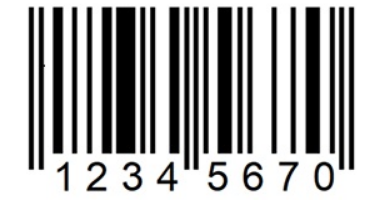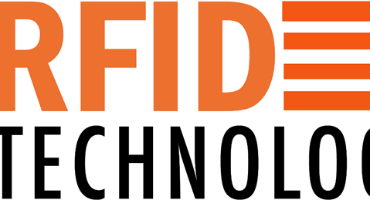The Barcode turns 70 year old ! What an amazing and brilliant invention - an invention on 7th October 1952, a patent was granted to American inventors Bernard Silver and Norman Woodland. Four years earlier, a shopkeeper in Pennsylvania went to the local university begging for help. He needed a way to get customers through his store quickly because logistics were stopping him meeting demand since typing in product numbers and prices into tills was cumbersome.
An electronic point of sale (PoS) system wasn’t possible, said the university. Silver overheard the conversation, set up shop in his parents’ apartment and enlisted Woodland. Woodland’s eureka moment came when he was on a Miami beach, drawing morse code in the sand. Looking at his dots and dashes, he realised that differing lines or shapes could be used to encode different numbers. His initial design for the barcode, which consisted of concentric circles of varying width, was inspired by his swirls in the sand.
The first attempts at implementation barcode technology used an ultraviolet ink, but it rubbed off too easily – it would have to be a printed design. It took another two decades before barcode gained commercial success in supermarkets. In the intervening period barcodes did find use on the railways, plastered across freight trains to be scanned by lights and sensors – but huge operating costs soon put a stop to that.
Once laser technology made scanning possible, the codes finally made it into supermarkets when they were unveiled in 1974 in Troy, Ohio. As the store opened, a pack of Wrigley’s chewing gum was the first barcoded item to be scanned – chosen to prove how barcodes worked even on much smaller packaging. Britain’s turn came five years later on a box of Melrose teabags. In 1979 at the Keymarkets supermarket in Lincolnshire, the box was swiped across the scanner and the price popped up on screen.
A reporter interviewed serious-looking shoppers and staff about the invention. The store manager was pleased that it would enable electronic and automatic management of stock levels and ordering – but most importantly it would help ‘control pilferage’ that is theft by the staff.
It wasn’t just store managers who got excited. There is an episode of Tomorrow’s World from 1993 in which it was explained that entomologists were sticking barcodes on the backs of bees to identify individual animals. A musician in Japan attached a signal generator to a barcode scanner so he could make music while doing his shopping. They’ve become crucial in medicine, too.
There are billions of possible combinations of barcodes: the supply is limitless. A 13-digit EAN retail barcode can be presented ten trillion different ways. That’s enough for everyone on Earth to invent more than 1,200 different products – each with a unique barcode number.
It’s easy to forget just how revolutionary the barcode has been in these 70 years. Boris Yeltsin wrote that a visit to a Texan supermarket turned him off communism because he was so awed by the ready supply and choice of goods – the shelves packed from front to back. Perhaps that wasn’t just a result of capitalism, but the efficiency of barcodes and the logistical problems they managed to solve.
Abarcode or bar code, which aee bars and spaces, is a method of representing data in a visual, machine-readable form. Initially, barcodes represented data by varying the widths, spacings and sizes of parallel lines. These barcodes, now commonly referred to as linear or one-dimensional (1D), can be scanned by special optical scanners, called barcode readers, of which there are several types.
Later, two-dimensional (2D) variants were developed, using rectangles, dots, hexagons and other patterns, called matrix codes or 2D barcodes, although they do not use bars as such. 2D barcodes can be read using purpose-built 2D optical scanners, which exist in a few different forms. 2D barcodes can also be read by a digital camera connected to a microcomputer running software that takes a photographic image of the barcode and analysis the image to deconstruct and decode the 2D barcode. A mobile device with an inbuilt camera, such as smartphone, can function as the latter type of 2D barcode reader using specialized application software (The same sort of mobile device could also read 1D barcodes, depending on the application software.
A slight variant of the same story
The barcode was invented by Norman Joseph Woodland and Bernard Silver and patented in the US in 1952. The invention was based on Morse code that was extended to thin and thick bars. However, it took over twenty years before this invention became commercially successful. UK magazine Modern Railways December 1962 pages 387–389 record how British Railways had already perfected a barcode-reading system capable of correctly reading rolling stock travelling at 100 mph (160 km/h) with no mistakes but the system was abandoned when privatisation of the railways took place.
An early use of one type of barcode in an industrial context was sponsored by the Association of American Railroads in the late 1960s. Developed by General Telephone and Electronics (GTE) and called KarTrak ACI (Automatic Car Identification), this scheme involved placing coloured stripes in various combinations on steel plates which were affixed to the sides of railroad rolling stock. Two plates were used per car, one on each side, with the arrangement of the coloured stripes encoding information such as ownership, type of equipment, and identification number.[3] The plates were read by a trackside scanner located, for instance, at the entrance to a classification yard, while the car was moving past. The project was abandoned after about ten years because the system proved unreliable after long-term use.
Barcodes became commercially successful when they were used to automate supermarket checkout systems, a task for which they have become almost universal. The Uniform Grocery Product Code Council had chosen, in 1973, the barcode design developed by George Laurer. Laurer's barcode, with vertical bars, printed better than the circular barcode developed by Woodland and Silver.
Their use has spread to many other tasks that are generically referred to as automatic identification and data capture (AIDC). The first scanning of the now-ubiquitous Universal Product Code (UPC) barcode was on a pack of Wrigley's chewing gum in June 1974 at a Marsh supermarket in Troy, Ohio, using a scanner made by Photographic Sciences Corporation. QR codes, a specific type of 2D barcode, have recently become very popular due to the growth in smartphone ownership.
Other systems have made inroads in the AIDC market, but the simplicity, universality and low cost of barcodes has limited the role of these other systems, particularly before technologies such as radio-frequency identification (RFID) became available since the 1940 and has great adaption and even going main stream with Pay click and underground Oyster card payments solution and used in retails for stock taking and supply chain logistics for end-to-end deliveries.
Barcodes can be used in many variety of markets and across a number of applications. Here are just some of the examples of commonly uses of Barcode Technologies
Mobile Coupons - More and more, today’s tech-savvy shoppers expect to find discounts online in the form of mobile coupons – mobile coupons that can be read by an imager.
Mobile Loyalty - Given the successful use of mobile loyalty programs by several large retail chains, restaurants and hotels are increasingly offering customers the ability to sign up for and track purchases through a mobile application and be rewarded for their loyalty. To redeem their rewards, they must have a worker scan the barcode on their mobile device.
Mobile Payment - Some stores enable customers to upload their gift card on their mobile app and then use that card as a way to pay for purchases. Very often, this type of mobile payment is tied to the mobile loyalty program as a complete solution.
Multiple Barcode Capture (Multi-Code) - Some situations call for the ability to capture multiple types of barcodes in a single trigger pull and simultaneously populate a database with the information. For example, retailers are able to extract the UPC, manufacturing date and serial number information from an item to improve records and better serve the customer.
Images and Signatures - There are certain scenarios where a retailer can use a 2D imager to take a picture of an item, a person, a document or a signature.
Optical Character Recognition (OCR) - Businesses that have invoices with customer names and account numbers in OCR fonts, such as OCR-A and OCR-B, can use an imager to decode and populate the information into an application. Other fonts supported include Magnetic Ink Character Recognition (MICR) and U.S. Currency.
Driver’s License Parsing - Many driver’s licenses contain a PDF417 barcode embedded with the personal identifying information that is written on the front. With available parsing software, retailers can use this information for autopopulating forms for credit card and loyalty card applications, as well as identifying serial returners and managing the sale of restricted items such as alcohol or tobacco.
Positive Patient ID - A 2D barcode is printed on a patients’ wristband and is scanned prior to any clinical interaction.
Specimen Collection - A Clinician scans wristband and vial or specimen collection container.
Medication Administration - A Clinician scans the barcode on the wristband and then the medication, prior to administering to the patient.
Dietary - Clinician or hospital worker scans wristband and menu.
Prescription Imaging - Scan an image of the paper prescription for digital document storage.
Driver’s License Parsing - Many driver’s licenses contain a PDF417 barcode embedded with the personal identifying information that is written on the front. With available parsing software, restaurants, hotels, and event sites can use this information for age and identity verification for restricted events and to manage the sale of alcohol.
Track and Trace - A 2D barcode is placed on components throughout the manufacturing process to identify the component.
Work in Process (WIP) - Barcodes are placed on partially manufactured goods to track all materials and partially finished products at various stages of the production process. WIP excludes inventory of raw materials at the start of the production cycle and finished products inventory at the end of the production cycle.
Shipping/Receiving - Shipping labels utilize 2D barcodes that contain more information and enable better data collection. As an example, PDF417 can incorporate many data points such as the part number, plant location, lot number, weight, pack date, revision and quantity. Shipping labels may also use a mix of both 1D and 2D barcodes.
Pick and Pack Scan the 1D and 2D barcodes on shelf labels, product labels and other barcoded labels to pick, pack and ship orders. 2D codes can offer a smaller footprint than 1D codes and may contain more information enabling better data accuracy.
So - The Barcode turns 70 year old ! What an amazing and brilliant invention that has completely revolutionised our lifes in every aspect.



